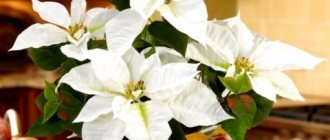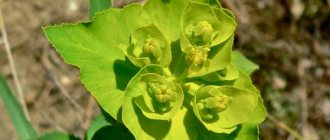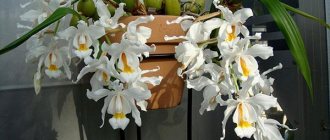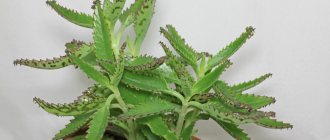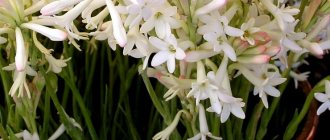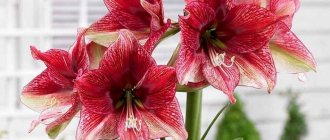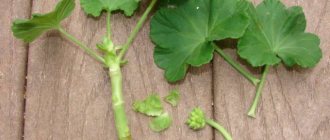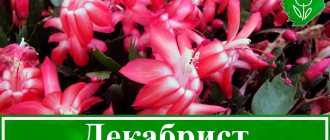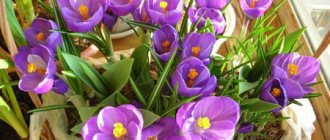Useful tips
With the onset of cold weather, most flowers usually enter a dormant period, and only a few plants are able to delight the eyes of their owners on frosty winter days with their chic, stunning flowers, bringing a great mood and feeling of summer into the house.
One such type of flower is the Christmas star or Poinsettia.
She is able to appear before us in all her glory in winter, when it is frosty and snowing outside.
If you want a beautiful flower to bloom in your home for Christmas
, resembling a star, then be sure to place Poinsettia on your windowsill.
Caring for this flower may not seem very easy at first, but for people
who have a patient character can handle any difficulties. And for lovers of true beauty who properly care for a flower, surround it with their care and love, carrying out all the necessary procedures on time, it is able to give unusual bright blooms.
How to care for a Christmas star at home
If the plant is not provided with proper care,
then it may begin to rot in the first days after you purchased it.
First of all, place the flower in the right place.
Usually this is the west side of the window. Make sure that the leaves of the Christmas star cannot come into contact with the glass, as they are so delicate that they will begin to fall off when interacting with a cold surface.
Basic rules for flower care
Regular watering of the plant
Warm, dry air can harm your Poinsettia flower.
If such a problem can be observed in your apartment, then you should either constantly spray the plant with warm, settled water at 20 degrees Celsius or purchase a special humidifier. These methods will additionally protect your flower from the appearance of spider mites, which are very destructive for the Christmas star.
From December to March, during the period when the Christmas star will bloom
, it should be provided with regular watering. The flower will also need water during the period of active growth, which occurs in the summer months.
Do not under any circumstances allow this
so that the soil in the pot dries out, but you shouldn’t allow water to stagnate either. If you find that the soil in the pot has begun to dry out, immediately water the plant and after an hour, drain all the water from the pan.
Water for watering the Christmas star must be settled for several hours.
Feeding with necessary fertilizers:
Feeding the Christmas star is usually done in the spring
, when the plant has finished its dormant period or about a month after you transplanted it into new soil. Feed the flower once every three weeks. It is best to use granular or complex liquid fertilizers. Fertilizers should be applied until autumn.
Oxalis (Oxalis)
Oxalis, oxalis, lucky clover, sour clover, hare cabbage - these are different names for the same plant. By the way, such names were chosen for a reason; the leaves of the representative of the Kislichny family are really sour. Flower growers are very fond of this crop for its colorful and delicate leaves that resemble butterflies. Oxalis is exactly the case when not only the color, but also the shape of the leaves causes admiration.
Some nuances that are important to know for successfully growing sorrel at home:
- Temperature: in summer 20-25, in winter - 16-18.
- Lighting: bright, but always diffused; direct rays can cause burns.
- Watering: plentiful, but the drainage system must be of very high quality, excess moisture is critical for it, during cold periods the amount of water decreases, you just need to maintain light moisture in the substrate.
- Humidity: moderate to slightly higher than normal room humidity.
- Pests: scale insects, aphids.
- Reproduction: by nodules or daughter bulbs.
Flowering and pruning of the plant
The Christmas star flower got its name because of its absolutely wonderful inflorescence.
, which in its entirety resembles a chic decoration. But the plant will give such flowers only if it is properly cared for.
Starting in October, the plant's daylight hours are reduced to 10 hours.
To do this, it is placed in a box or covered with a dark cloth on top.
With the onset of winter, the bush must be placed in a warm place
and provide it with bright lighting, as well as provide the plant with abundant watering.
Your Christmas Star
may bloom by the end of December, provided that you have fulfilled all the requirements correctly. You will be able to enjoy amazing beautiful flowers until spring.
Perhaps the leaves of the flower may begin to fall off. This is due to temperature changes in the room, excess moisture in the ground or drafts. Try to protect your plant from these unpleasant factors.
The Christmas star is pruned immediately after flowering.
You need to trim exactly half of the plant. Shoots approximately 15 cm in length should be left.
After you transplant the plant into a new pot, you should trim off all weak shoots.
Some Poinsettia branches that stand out from the total number are pruned during the growing season. Uneven or too long shoots are removed in order to maintain the shape of the bush.
Popular types
Most often you can see a photo with reed Guzmania (aka Guzmania minor) - its distinctive features are bright bracts, shiny green leaves and the ability to bloom for a long time.
Tempo has light green leaves.
Common varieties also include:
- Mosaic Guzmania Guzmania musaica with 70-centimeter leaves forming a spreading rosette and a straight peduncle. Its leaves are decorated with brown and green stripes, and the bottom is colored red.
- Blood red Guzmania sanguinea - during the flowering period, all leaves (except for the outermost ones) turn bright red. The inflorescence of this species is not developed and is immersed in a rosette.
- Guzmania Donnell-smithii (donnell-smithii) has pale green scaly leaves and an erect flower stalk.
- Guzmania Tempo Guzmania Tempo, with light green leaves and bright bracts.
Blood red with luscious dark leaves and red spots of false flowers.
Peculiarities of reproduction of the Christmas star
If Poinsettia has been in your home for at least two seasons
, then it’s time to start propagating it, for which bush cuttings are ideal.
The Christmas star is pruned at the beginning or in the second half of summer.
, but without delaying this period until the end of August. In order to properly maintain a pruned bush, the room temperature should be about 30 degrees.
If the temperature does not reach the required level
, then you need to create a greenhouse effect or simply place the bush in a greenhouse.
The cuttings needed to propagate the Christmas star should be no more than ten cm.
Three healthy green leaves must grow on it.
It is necessary to prepare good, not dry soil with drainage and plant the shoot in it.
For new shoots to appear on the bush, the same humidity should be maintained for several weeks.
Always make sure the plant's soil is clean. Be sure to spray the plant several times a day to prevent pests. To avoid burns from direct sunlight, always alternate between shade and bright sun.
Croton (Codiaeum)
Croton has attractive leaves. The codiaum flower is not particularly decorative; it is often simply torn off so that it does not take away excess energy. A representative of the Euphorbiaceae family has a truly fantastic color, combining several colors at once: red, yellow, green, pink, orange. This amazing combination will appeal to lovers of picturesque and rich colors. Codiaum also has an interesting feature - milky sap in the stems and leaves.
However, croton is demanding in care; it cannot be called unpretentious and unpretentious:
- Temperature: in summer +20-23, in winter +17-18, t should not fall below 17 degrees. It is also important to avoid any drafts.
- Watering: abundant in spring and summer, perform the procedure when the top layer of soil dries 1 centimeter. In winter, the introduction of moisture is reduced.
- Air humidity: high, it is necessary to regularly spray the leaves and clean them of dust.
- Lighting: should be full, but should be protected from direct rays. Therefore, it is better to place the pot on the east or west side.
- Pests: rarely affect due to the poisonous sap, but under unfavorable conditions (dry air) scale insects are possible.
- Reproduction: apical cuttings, air layering.
Flower diseases and pests
Typically, the Christmas star is susceptible to attack by mealybugs.
These tiny insects can instantly spread throughout the plant, feeding on its sap, leaving behind a sticky coating on the surface of the leaves. If you do not take the necessary measures in time, the flower will instantly begin to stop growing, wither and, ultimately, it will certainly die.
It is recommended to wipe the leaves with alcohol against this scourge.
or a solution of laundry soap. In order to achieve maximum effect, it is better to use proven drugs: “Commander”, “Fitoverm”.
To fight spider mites
, you need to spray the stems of the plant and wipe its leaves with tobacco infusion. In the future, try to keep containers of water near the plant and spray the flower more often.
From a fungus called gray rot
, can protect the removal of damaged leaves and spraying the plant with antifungal drugs.
If you suddenly find damage or some kind of plaque on the leaves of your plant, then it may be due to the incorrect composition of the soil. Prepare new soil or buy it from a flower shop.
Maranta
An attractive feature of arrowroot is its bright red veins. The combination of scarlet, dark green and light green shades makes this decorative foliage plant stand out. Belongs to the Marantaceae family.
Conditions for growing tropical exotics:
- Temperature: in spring and summer +22-24, in winter and autumn +18-20. Protection from any drafts is important.
- Lighting: bright, but diffused light, but can withstand slight shading.
- Watering: during the warm period, plentiful, it is necessary to maintain moderate soil moisture, and the soil surface should not be allowed to dry out. In winter, the procedure should be performed less frequently; the surface of the top layer of soil should dry out.
- Humidity: high, it is necessary to regularly spray the arrowroot, and it is also useful to periodically clean it in the shower.
- Pests: spider mites.
- Reproduction: by dividing the bush, apical cuttings.
Can the Christmas star flower be poisonous?
The Christmas star has milky sap inside its stem.
According to the majority, it is poisonous. But this is not true. In order to somehow suffer from this flower and get poisoned, a person or animal needs to eat about 500 leaves from this plant at a time.
There is still a slight threat to the juice of this plant.
If it gets on the skin, dermatitis may occur in that group of people who are intolerant to the milky sap of similar plants.
If you belong to this category of people, then when working with a flower, just wear gloves and wash your hands very thoroughly
after working with the plant.
Scientists have officially proven
the harmlessness of the Christmas star for animals and humans.
At first glance, caring for a Christmas star flower may not seem very easy.
, and the plant itself is too capricious, but you must agree that it’s nice to receive a New Year’s gift in the form of a gorgeous, bright flower, knowing that it was you who grew it with a certain amount of love and care.
Begonia royal
The plant is also called Begonia Rex. It blooms rather inconspicuously, so flowering cannot be called the main trump card of a representative of the Begoniev family. The main beauty of the royal begonia is its variegated and luxurious leaves.
- Temperature: about 19-22 degrees, in winter - about 16.
- Lighting: bright, but the sunlight must be diffused; direct rays can cause burns to the foliage.
- Watering: abundant, you need to add moisture immediately when the top layer dries.
- Air humidity: normal or very slightly increased.
- Pests: thrips.
- Reproduction: through seeds, cuttings, division of the root system.
Coleus
Coleus has two advantages: firstly, it is undemanding, and secondly, it is very colorful and beautiful. Many of them have an interesting color scheme - a green border around the edges and a motley center. Belongs to the group of deciduous (or herbaceous) orchids.
In order for coleus to delight with its beauty, it is necessary to comply with its requirements:
- Pests: whitefly, spider mites, aphids.
- Lighting: To achieve the maximum decorative effect, crops need sufficient lighting, but direct light should not be allowed, the light should be diffused.
- Humidity: high; watering will work.
- Temperature: in summer +18-20 °C, in winter +12-14, not lower.
- Reproduction: cuttings, rarely seeds.
- Watering: in spring and summer, water abundantly if the top layer of soil in the pot dries out; in the cold season, watering is reduced, but the soil should not be allowed to dry out.
Anthurium
This beautifully flowering evergreen plant is better known to flower lovers under the name “flamingo flower”. This is a very numerous genus of plants belonging to the aroid family.
This family includes about one hundred and ten different genera and more than one and a half thousand species. Previously, this plant was grown exclusively for its unusual flowers, which were used to make bouquets. Today they very successfully complement the interior of the room.
Neoregelia
They look like nidularium, but this is not surprising, since they belong to the bromeliads. Neoregelia is attractive with its beautiful glossy leaves and variegated bracts.
The terms accepted by Neoregelia are simple:
- Pests: aphids, powdery mildew, lepidoptera bromeliads.
- Lighting: Bright diffused light, no direct light.
- Humidity: high; It is recommended to use a humidifier or frequent spraying. It is also important to remove dust from the surface of the leaves.
- Temperature: in summer +21-25°C, in winter +16-18. It is important that the plant is well ventilated so that it has access to fresh air, but is protected from drafts.
- Reproduction: daughter rosettes.
- Watering: water under the rosette of leaves, and in winter under the root.
Transplant technology
- Before starting the procedure, the flower should be watered. This is necessary to make it easier to remove the plant from the pot.
- Remove the earthen lump from this container.
- Carefully examine the root system of the plant.
- If any damage is detected on the roots, cut it off. The remaining roots need to be processed.
- Pour drainage (1 centimeter) and a small amount of soil onto the bottom of the pot. Install the flower, then sprinkle with soil to the end of the pot.
- This is done by watering after a while. It is recommended to water the flower only when the first 2 layers of soil dry out.
Koleriya
Among the many indoor decorative flowering plants, experienced gardeners can come across this stunning, but not yet very common flower. It is called Koleria (Gesneriaceae family). Sometimes in specialized literature it is called tidea or isoloma.
This genus includes more than sixty species of flowers. It is named after the scientist Michael Kohler, who taught natural sciences at the institutes of Zurich in the mid-19th century. The homeland of these flowers is Central America.
Koleria flowers resemble bells with slightly bent edges. Each species has its own unique color - the flowers are pink, orange, scarlet, crimson or red with variegated inclusions.
The flowers are always located on a short peduncle. Young plants form single buds from the foliage, mature plants form clusters of 5 buds.
Koleria is characterized by abundant and long flowering (from June to September).
Hypoestes
Hypoestes belongs to the Acanthus family, it will decorate and enliven the decor of any room. Variegated leaves will appeal to lovers of variegated and unusual colors and patterns.
Features of hypoestes:
- Temperature: in spring and summer +22-25°C, in winter +17-18.
- Lighting: bright diffused.
- Watering: in warm weather, abundant when the top layer of soil dries. In winter, add moisture 1-2 times after the top layer of soil dries.
- Air humidity: high, spraying recommended.
- Pests: not susceptible.
- Reproduction: cuttings, through seeds.
As you know, red is the color of wealth and prosperity; it is believed that its presence in the house can attract success. It is possible that such thoughts have no basis in reality, but it is a reality, not a fiction, that color therapy works and with regular visual contact a person’s mood improves. Looking at a variegated houseplant with a red tint, you can lift your spirits, and a good mood - the key to good health.

